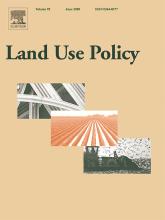Resource information
The nature conservation regimes of post-socialist EU countries are multi-layered, consisting of initial components established before Socialism, reinforced and solidified during Socialist period, and changes brought about by the democratic transition. For nature conservation, the transition to democracy led to new political and legal frameworks, the re-allocation of resources and land tenure changes, which Central Eastern European countries approached differently. Accession to the European Union (EU) became an additional layer in the transition process that brought new policy elements, such as Natura 2000. Accession has also opened up new funding streams for conservation and introduced requirements for participatory decision-making. The controversies surrounding the transposition and practical implementation of Natura 2000 has revealed mismatches between the different policy components of such multi-layered regimes or, in other words, between path dependence and change. This article examines how existing institutional path dependence and occurring policy changes shape the management capacities of selected national parks in Poland and Slovakia. This provides insights into the contextual factors that enhance or constrain the ability of park authorities to deliver the necessary conservation measures and other policy provisions.


